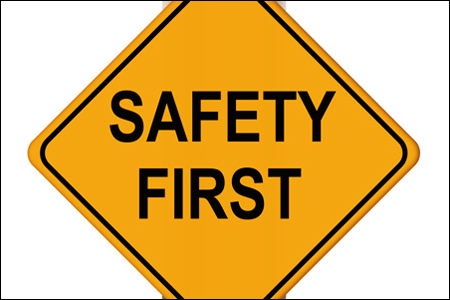Keeping Kids Safe: The Aftermath of the Jerry Sandusky Scandal
By Julie Williams, Staff Writer
Although it has been over three years since Jerry Sandusky was found guilty of 45 counts relating to child sexual abuse [1], the nation is still feeling the effects. After details of the horrid abuse emerged, we began to ask ourselves: are we doing enough to keep our children safe? In answering this question, there was a rejuvenated push by both state governments and institutions, such as colleges and universities, to implement new laws and policies. Now, these changes are making appearances.
Changing Laws
Pennsylvania, especially, felt the pressure to change its seemingly lenient child abuse laws. The state’s new, more stringent child abuse law was placed into effect at the onset of 2015 and will hopefully prevent more victims of abuse from being overlooked. The revised law expands the definition of child abuse by lowering the standard of what is considered child abuse to “bodily injury,” which requires “impairment of a physical condition” or substantial pain rather than the previously defined severe pain or “lasting impairment.” [2].
Another change to Pennsylvania’s child abuse laws is a process to eliminate the chain-of-command reporting. Now, instead of reporting suspected child abuse to supervisors, professionals who have contact with children (i.e., doctors, teachers, etc.) are required to report directly to ChildLine, which is the state’s child abuse reporting hotline. [2]. The idea behind this change is that direct reporting will be more succinct than the reports being transferred to various bodies.
The new law also clarifies who is a mandatory reporter and forces the expansion of background checks for school volunteers and requires school employees, independent school contractors, and volunteers who are in direct contact with children to update clearances every 36 months. [2] Also, some mandatory reporters, including teachers and child-care providers, must now receive training. [2]. The focus of this training is on the role of mandatory reporters, as well as signs and symptoms of abuse.
Changes within Institutions
Colleges and Universities are doing their part to ensure that no such scandals take place on their campuses by adapting risk management plans for minors to its legal context. Minors are actually on campus more than one would originally think. The obvious instances would include daycare services and field trips. However, many institutions host community outreach programs, athletic events, student organization sponsored programs, structured programs, and summer programs. [3].
Child molestation in higher education is a low frequency, high severity event. [3]. While minors are frequently present on campuses, child molestation rarely occurs within colleges and universities. [3]. When it does occur, however, or when allegation arise, the stakes can be enormous. [3]. Penn State is still stigmatized because of the scandal. We all seem to focus on the negative and forget the great alumni that have graduated from the institution.
So what changes are being made? Most colleges and universities are adopting new policies and procedures to protect the children on their campuses. Having some basic requirements can establish appropriate boundaries for adult behavior and limit the possibility of molestation. [3]. These policies, however, should be at least as strong as the state law to have any real power.
Some colleges and universities may use screening and selection procedures to deter potential molesters. This may even discourage molesters from even applying, [3] for fear that the offender’s questionable past would be uncovered.
Institutions are also altering tactics on how to respond effectively to suspicions and allegations of child molestation. In addressing child molestation, the worst approach an institution can take is to place the highest priority on preserving its own reputation. This is arguably the largest mistake made by Penn State—attempting to protect names and standing of prominent individuals. The first priority must be to protect the child. [3].
Will These Changes Work?
It is suggested that child molestation is encouraged by three conditions: access to children, privacy, and control. [3]. Institutions can put forth efforts to keep predators from children by implementing strong policies. And the new laws can do the same, by requiring background checks. However, offenders will slide through. As a society, we still need to remain vigilant and trust instincts when it comes to our children.
Sources:
[1] http://www.cnn.com/2013/10/28/us/penn-state-scandal-fast-facts/
[2] http://www.post-gazette.com/news/state/2015/01/02/Stricter-child-abuse-laws-go-into-effect-after-Jerry-Sandusky-scandal/stories/201501020030
[3] http://www.ajgrms.com/portal/server.pt/gateway/PTARGS_0_28406_581934_ 0_0_18/ManagingRiskMinorsPaper_6-14-12_final.pdf
